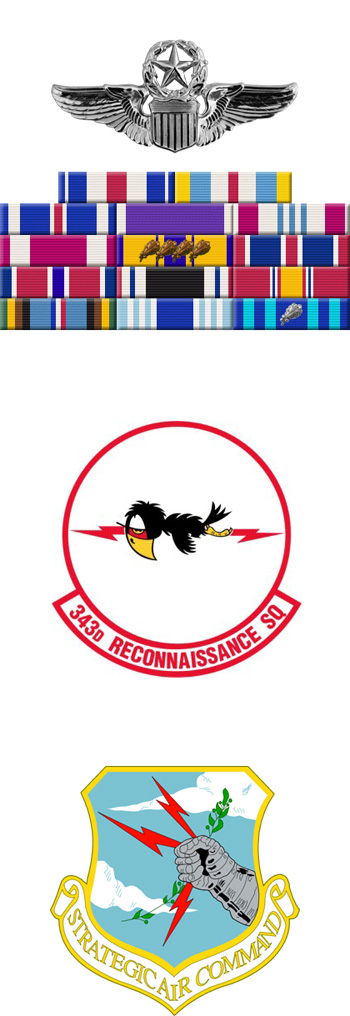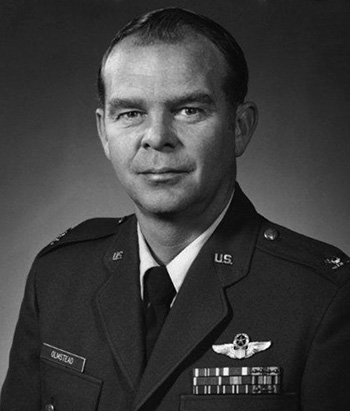
|
Freeman Bruce Olmstead |
 |
|||
| Rank, Service | ||||
Colonel O-6, U.S. Air Force |
||||
| Veteran of: | ||||
|
||||
| Tribute: | ||||
Bruce Olmstead was born on June 17, 1935, in Elmira, New York. He was commissioned a 2d Lt in the U.S. Air Force through the Air Force ROTC program on June 3, 1957, and went on active duty beginning August 16, 1957. Lt Olmstead next completed Pilot Training and was awarded his pilot wings at Laredo AFB, Texas, in October 1958, followed by survival training and B-47 Stratojet Combat Crew Training from November 1958 to March 1959. His first assignment was as an RB-47 pilot with the 338th Strategic Reconnaissance Squadron at Forbes AFB, Kansas, from April to July 1959, and then with the 343rd Strategic Reconnaissance Squadron at Forbes from July 1959 to January 1961. During this time, the RB-47 he was piloting was shot down by Soviet fighters over international waters near the Soviet Union on July 1, 1960, and he was captured and taken as a Prisoner of War. Capt Olmstead was released after 208 days in captivity on January 24, 1961. After returning to the United States, he served as Special Assistant to the Commander of the 55th Strategic Reconnaissance Wing at Forbes AFB from January to September 1961, and then received an Air Force Institute of Technology assignment to complete his master's degree in International Relations at San Francisco State College from September 1961 to October 1962. His next assignment was as an Air Targets Officer and Tactical Intelligence Officer with the 12th Tactical Fighter Wing at MacDill AFB, Florida, from November 1962 to March 1964, followed by service as an Air Targets Officer and Project Officer in the Directorate of Intelligence with the Tactical Air Warfare Center at Eglin AFB, Florida, from March 1964 to October 1965. Maj Olmstead served as a Tactical Intelligence Liaison Officer with Headquarters Tactical Air Command stationed at Wright-Patterson AFB, Ohio, from October 1965 to June 1968, and then served as a Test Director, Chief Flight Examiner, and Branch Chief of Standardization/Evaluation in the Cargo Operations Branch, Directorate of Flight Test, with the Aeronautical Systems Division at Wright-Patterson AFB from July 1968 to July 1970. He then attended Air Command and Staff College at Maxwell AFB, Alabama, from August 1970 to June 1971, followed by service as Assistant Chief of Stan/Eval with the 4950th Test Wing at Wright-Patterson AFB from July 1971 to June 1973. Col Olmstead next served as Assistant Professor of Aerospace Studies and then as Commander of the Air Force ROTC detachment at Kent State University, Ohio, from July 1973 to July 1977, followed by service as an operations officer and watch chief in the National Military Intelligence Center of the Defense Intelligence Agency in Washington, D.C., from 1977 to 1979. After attending the Defense Intelligence Attache School, Col Olmstead's final assignment was as U.S. Air Attache at the U.S. Embassy in Copenhagen, Denmark, from 1980 until his retirement from the Air Force on November 1, 1983. |
||||
|
||||

